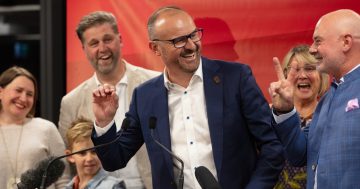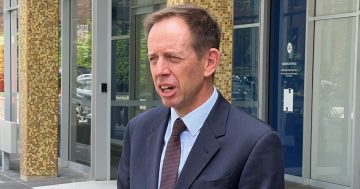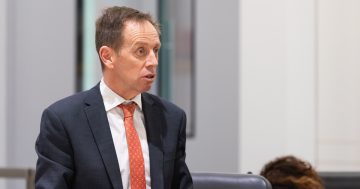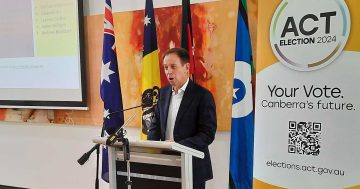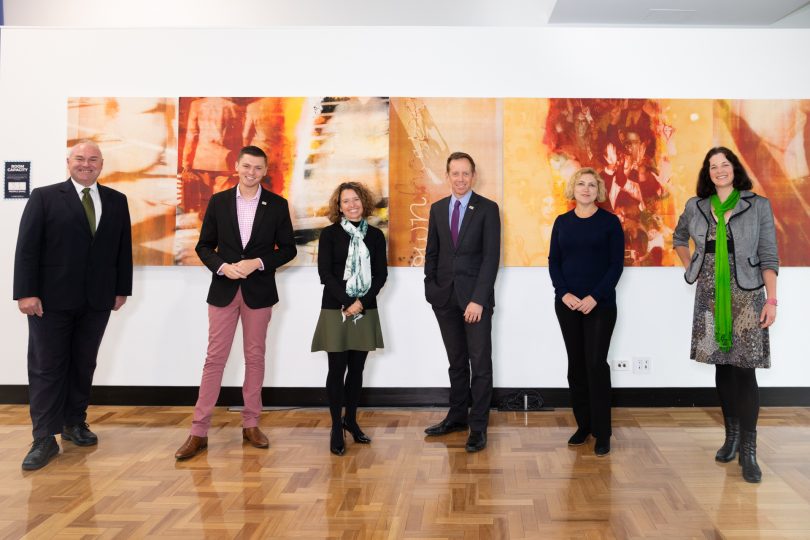
ACT Greens Andrew Braddock, Johnathan Davis, Rebecca Vassarotti, Shane Rattenbury, Emma Davidson and Jo Clay. Photo: Michelle Kroll.
The Opposition has accused the ACT Greens of profiting from taxpayer funds throughout its 2020 election campaign and has called on them to pay the money back.
Canberra Liberals Deputy Leader Jeremy Hanson has also associated the excess funds from the campaign with the ACT Greens opening a new office in time for a federal election campaign.
According to the ACT Electoral Commission, the ACT Greens only spent a total of $136,839 on their campaign but received $313,539 in public funding.
“The ACT Greens have since opened a new campaign office in Braddon, saying they intend to use it ‘for the 2022 Federal Election,” Mr Hanson said.
“This is not how electoral funding is intended to be used. It is provided to reduce the influence of big donors, not use ACT taxpayer money to fund federal campaigns.”
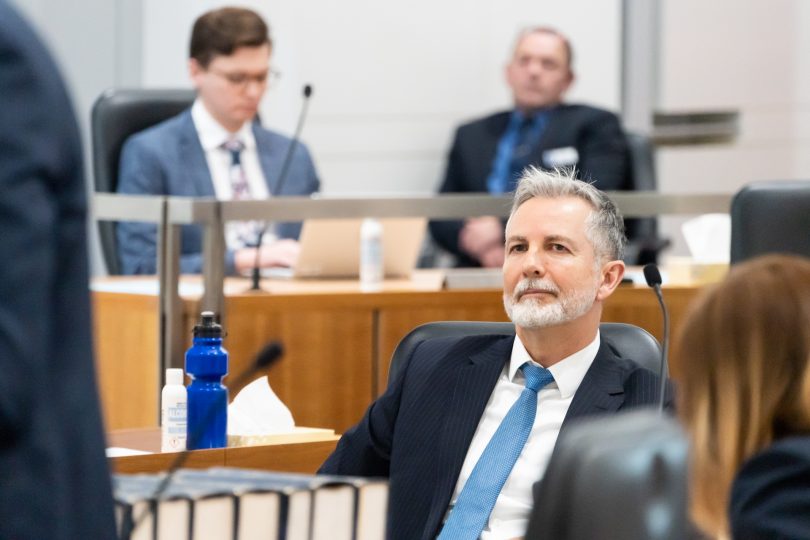
Deputy Opposition Leader Jeremy Hanson wants the ACT Greens to pay their election profit back. Photo: Region Media.
But the ACT Greens say the $176,700 discrepancy is simply because they are not required to disclose all expenditure, and the ‘profits’ don’t take into account costs such as paying campaign staff.
ACT Greens Leader Shane Rattenbury disagreed with the premise of Mr Hanson’s claim of profits being used to fund a federal political campaign.
“The ACT Greens did not profit from the ACT Election in 2020. During the election campaign, we spent more than the income we received from the ACT Electoral Commission. However, the reporting categories didn’t include some of our costs, such as paying our campaign staff,” Mr Rattenbury said.
“To be clear, this funding was spent on genuine election costs.”
Mr Hanson moved a motion in the Legislative Assembly on Thursday (10 February) calling on the ACT Greens to pay back to the ACT what he says is a $176,700 profit.
Labor and the Greens, however, used their numbers in the chamber to amend the motion and remove the requirement to pay back any money.
Instead, the government will be required to consider the recommendations of an Assembly inquiry into the 2020 election.
Parties receive taxpayer funding at a rate of around $8 per eligible vote.
At the 2020 election. ACT Labor received $877,847 in public funding while the Canberra Liberals received $313,539. Both spent more than this on their campaigns, according to the ACT Electoral Commission.
After the election, the ACT Electoral Commission had recommended the Electoral Act be adjusted so that parties could not receive more public funding than they spent on their campaigns.
In 2015, the ACT voted to increase the amount of public funding per vote from $2 to $8 and removed the cap on private donations.
Mr Rattenbury said it seemed Mr Hanson no longer agreed with these rules – which he’d supported at the time – because he was threatened by the Greens’ low-cost campaigning.
The now-Attorney-General was the only member of the Legislative Assembly who voted against the changes in 2015, arguing it served the “vested interests” of Labor and the Liberals.
“Unlike the Canberra Liberals, the ACT Greens are proud to be a party that is committed to enhancing Australia’s democratic process and transparent funding arrangements rather than accepting donations from corporations trying to buy influence,” Mr Rattenbury said.












